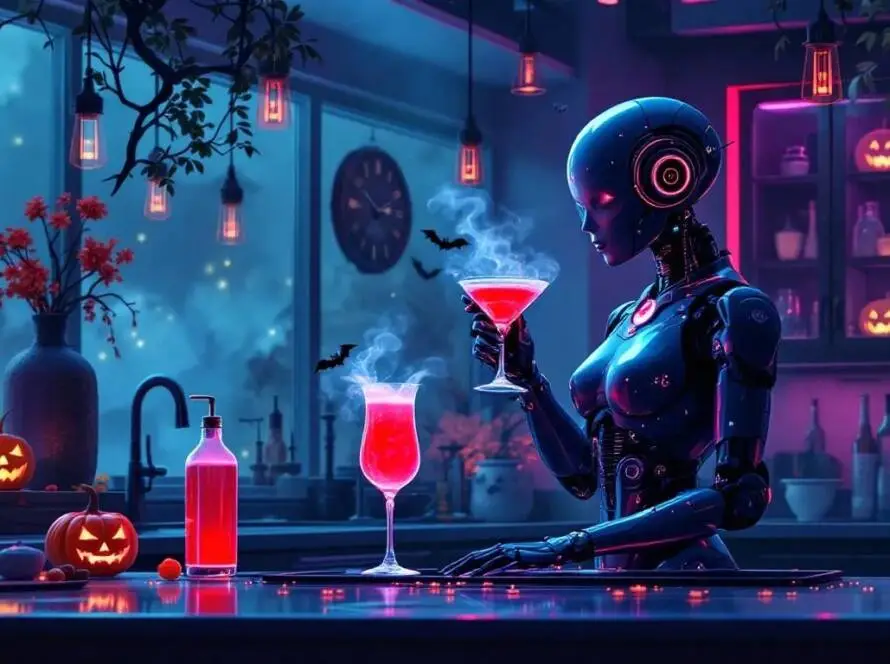Stardate: 1968
“Night of the Living Dead” is a landmark horror film directed by George A. Romero, released in 1968. It is widely regarded as one of the most influential films in the zombie genre and has had a lasting impact on horror cinema. Romero’s innovative storytelling and unique approach to filmmaking redefined the horror genre, setting the stage for countless films that followed.
Plot Summary
The film unfolds at a rural farmhouse, where a group of people finds itself trapped amid a growing zombie apocalypse. The story kicks off with siblings Barbara and Johnny visiting their father’s grave. Their serene outing quickly turns terrifying when a zombie attacks them. In a panic, Barbara flees to a nearby farmhouse, seeking refuge. Inside, she meets Ben, a resourceful and pragmatic man who quickly takes charge of the precarious situation. As more survivors arrive—each bringing their own ideas and backgrounds—the tensions among the group escalate. They must not only face the relentless undead lurking outside but also confront their own fears and prejudices, revealing the complexities of human nature under extreme pressure.
Themes
“Night of the Living Dead” delves into multiple themes that resonate deeply with viewers:
Survival: The primal survival instinct is a central theme that showcases how ordinary people react when faced with overwhelming odds. The struggle for survival becomes a lens through which the characters’ true natures are revealed.
Social Commentary: The film reflects societal issues prevalent in the 1960s, including race relations, gender roles, and the breakdown of social order. The casting of a black protagonist, Ben—played by Duane Jones—was groundbreaking at the time, highlighting racial tensions in a manner that sparked essential conversations.
Fear of the Unknown: The zombies symbolize the unknown, representing both societal collapse and the primal fears that reside within humanity. As civilization crumbles, the characters grapple with the terror of what lies beyond their doors, forcing them to confront not only external threats but also internal conflicts.
Cultural Impact
“Night of the Living Dead” was groundbreaking for its time, particularly in its portrayal of violence and its nuanced approach to social issues. Romero challenged established horror genre conventions, moving beyond mere shock value to create a thought-provoking narrative. The film’s shocking, ambiguous ending offers powerful commentary on societal attitudes and has fueled extensive discussion and analysis over the years.
Legacy
The legacy of “Night of the Living Dead” extends far beyond its original release. It has spawned numerous sequels, remakes, and adaptations, solidifying its place in film history. Often credited with popularizing the modern zombie genre, the film’s influence can be seen in various media forms, from television shows like “The Walking Dead” to films that explore the apocalypse theme.
“Night of the Living Dead” has secured its spot in the National Film Registry, acknowledged for its cultural significance. It is frequently included in discussions about horror films and their societal implications, reminding viewers that horror can reflect deeper realities beyond mere entertainment. As a seminal work, it has not only shaped the zombie genre but has also left an indelible mark on cinematic history, influencing generations of filmmakers and audiences alike. Its exploration of human nature, societal flaws, and the ever-looming threat of the unknown ensures that this classic continues to resonate today.
Viewing Options
You can watch “Night of the Living Dead” on various platforms, including:
- Internet Archive: Offers free streaming and downloads of the film.
- YouTube: Many versions of the film are available for free viewing.
This film remains a significant achievement in cinema history, celebrated for its artistic innovation and exploration of psychological horror.
Disclaimer:
The information provided in this blog is for informational purposes only and should not be considered professional advice. While we strive to provide accurate and up-to-date information, we make no guarantees about the completeness or reliability of the content. Any actions you take based on the information in this blog are at your own risk. Additionally, this blog may contain affiliate links, and we may earn a commission from purchases made through those links.

